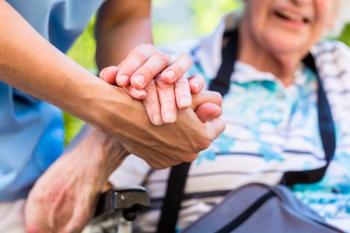
Study Finds Bimekizumab Well Tolerated Long Term for Moderate to Severe Psoriasis
Bimekizumab demonstrated a favorable long-term safety profile for the treatment of moderate to severe psoriasis, aside from an increased incidence of mild to moderate oral candidiasis that was also observed with short-term exposure.
Bimekizumab exhibited an overall favorable safety profile for the treatment of moderate to severe psoriasis, with no additional risks of adverse events (AEs) observed over a long-term exposure duration. Findings were published today in
Designed as a monoclonal immunoglobulin G1 (IgG1) antibody that selectively inhibits both interleukin (IL)-17A and IL-17F, bimekizumab has been shown in prior research to provide superior efficacy vs placebo and other biologic therapies, such as ustekinumab,
Previous research on the short-term safety (1 year) of bimekizumab has indicated the biologic is well tolerated among patients, but an increased incidence of mild to moderate oral candidiasis was observed.
“Psoriasis is a chronic disease requiring long-term management; understanding the long-term safety profiles of psoriasis treatments, such as bimekizumab, is important,” said the study authors.
They conducted an analysis of pooled data from 4 phase 3 randomized clinical trials (BE VIVID [NCT03370133], BE READY [NCT03410992], BE SURE [NCT03412747], and BE BRIGHT [NCT03598790]) and 4 phase 2 randomized clinical trials (BE ABLE 1 [NCT02905006], BE ABLE 2 [NCT03010527], PS0016 [NCT03025542], and PS0018 [NCT03230292]) to evaluate the long-term safety of bimekizumab over 2 years.
Adult patients with moderate to severe psoriasis who were eligible for systemic psoriasis therapy and/or phototherapy were included. They also met certain disease severity criteria:
- Psoriasis Area and Severity Index (PASI) level 12
- 10% body surface area (BSA) affected by psoriasis
- Investigator’s Global Assessment (IGA) score of 3 on a 5-point scale
Safety of bimekizumab was assessed via treatment-emergent adverse events (TEAEs), serious TEAEs, and TEAEs leading to treatment discontinuation, which were reported using exposure-adjusted incidence rates (EAIRs) per 100 person-years.
A total of 1789 patients (mean [SD] age, 45.2 [13.5] years; 70.0% men) were treated with 1 or more doses of bimekizumab across the pooled study cohort, with total bimekizumab exposure shown to be 3109.7 person-years.
TEAEs occurred at an EAIR of 202.4 per 100 person-years and did not increase with longer duration of bimekizumab exposure (weeks 0-16: 324.7 per 100 person-years; 95% CI, 305.6-344.7; weeks 16-52: 225.5 per 100 person-years; 95% CI, 212.8-238.7; weeks 52-104: 149.1 per 100 person-years; 95% CI, 139.4-159.3).
Of the TEAEs reported, nasopharyngitis (19.1 per 100 person-years; 95% CI, 17.4-20.9), oral candidiasis (12.6 per 100 person-years; 95% CI, 11.3-14.0), and upper respiratory tract infection (8.9 per 100 person-years; 95% CI, 7.8-10.1) were the most frequent. Most oral candidiasis events were cited to be mild or moderate, with 3 events leading to discontinuation.
Incidence of AEs was also shown to be lower with bimekizumab, 320 mg, given every 8 weeks vs every 4 weeks (141.4 vs 219.6 per 100 person-years).
The EAIRs of inflammatory bowel disease (0.1 per 100 person-years; 95% CI, 0.0-0.3 per 100 person-years), adjudicated suicidal ideation and behavior (0.0 per 100 person-years; 95% CI, 0.0-0.2 per 100 person-years), and adjudicated major adverse cardiac events (0.5 per 100 person-years; 95% CI, 0.3-0.8 per 100 person-years) were found to be low.
In acknowledging limitations of the study, researchers said that safety data may not fully represent a real-world population due to the specific patient inclusion and exclusion criteria of the trials analyzed.
“Furthermore, the population may be too small to draw definitive conclusions for more rare events.”
Reference
Gordon KB, Langley RG, Warren RB, et al. Bimekizumab safety in patients with moderate to severe plaque psoriasis pooled results from phase 2 and phase 3 randomized clinical trials. JAMA Dermatol. Published online May 11, 2022. doi:10.1001/jamadermatol.2022.1185
Newsletter
Stay ahead of policy, cost, and value—subscribe to AJMC for expert insights at the intersection of clinical care and health economics.

















































